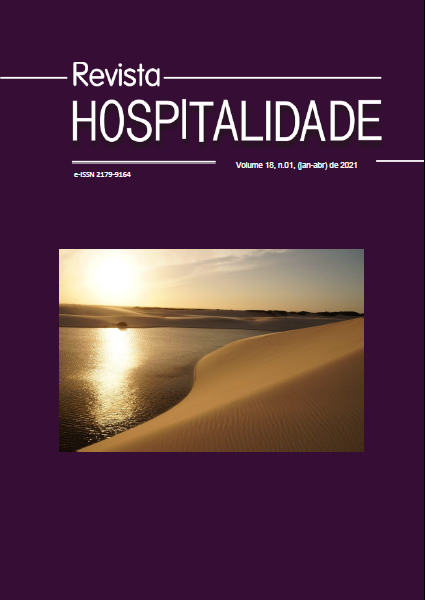QUALITATIVE EVALUATION AND IDENTIFICATION OF REGIONAL FOODS OF THE PREPARATIONS OFFERED IN A UNIVERSITY REFECTORY
DOI:
https://doi.org/10.29147/revhosp.v18i01.930Palavras-chave:
Serviços de alimentaçãoResumo
To evaluate the quality of menus and to verify the presence of regional foods offered at a university refectory. Cross-sectional qualitative study conducted at the University refectory from July to December 2019, in which 23 menus were collected and analyzed based on the Qualitative Evaluation of Menus Preparation method, counting the weekly frequency of leafy greens, preparations rich in sulfur (except beans), fruits, sweets, fried foods, fried foods associated with sweets, high-fat meats and monotone colors. The presence of regional foods was verified on the menus. The results were submitted to the Kruskal-Wallis test with a 5% significance level (p<0.05). Among the seven items evaluated, 5 of them were classified as positive, which are: excellent availability of leafy greens, good presence of fruits, sweets, fried foods, and fried foods associated with sweets and monotony of similar colors at a regular level. The presence of high-fat meats and foods rich in sulfur were classified as negative aspects of the menus. A regular situation was observed regarding the inclusion of regional foods. The adequate construction of menus allows the adaptation of nutritional needs, health promotion and valorization of the local cultural heritage when correlated to regional foodsDownloads
Downloads
Publicado
Como Citar
Edição
Seção
Licença
Autorizo a publicação de meu trabalho, pela Revista Hospitalidade, de acesso aberto e gratuito, por prazo indeterminado e a título de colaboração não remunerada. Declaro também que o textual apresentados são de minha autoria, indicadas as fontes quando necessárias. Declaro ainda que reconheço a política de punição por eventuais plágios devidamente identificados, que consiste na eliminação imediata dos arquivos com essa caracterização.Autores mantém os direitos autorais e concedem à revista o direito de primeira publicação, com o trabalho simultaneamente licenciado sob a Licença Creative Commons Attribution que permite o compartilhamento do trabalho com reconhecimento da autoria e publicação inicial nesta revista.







